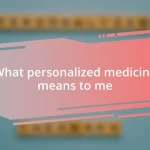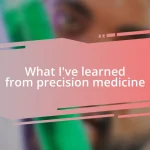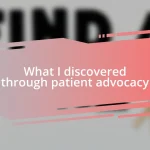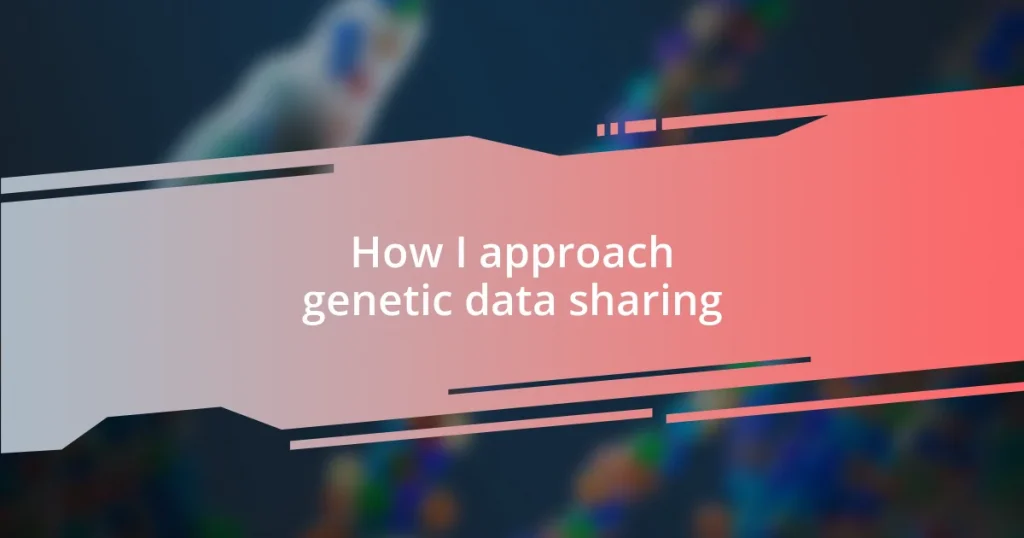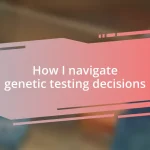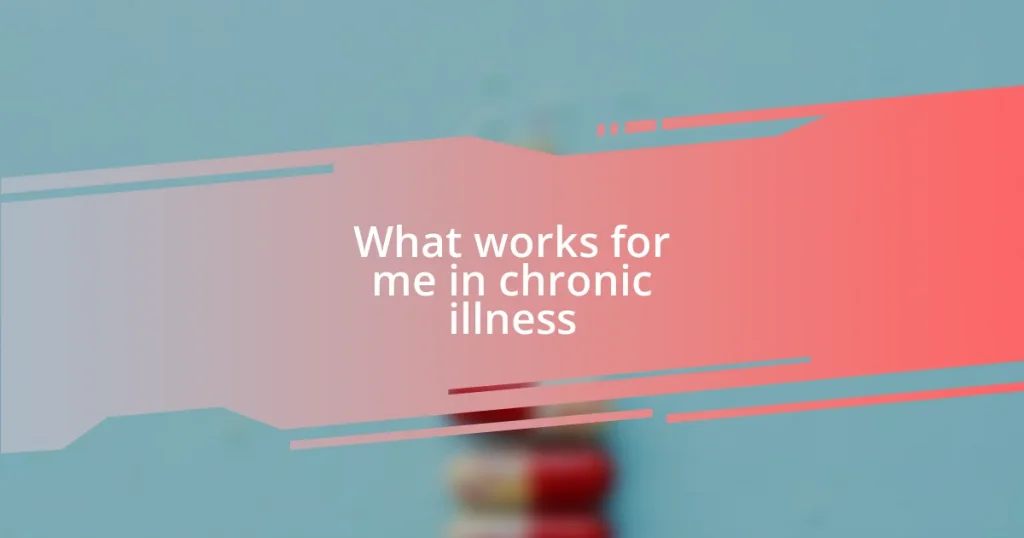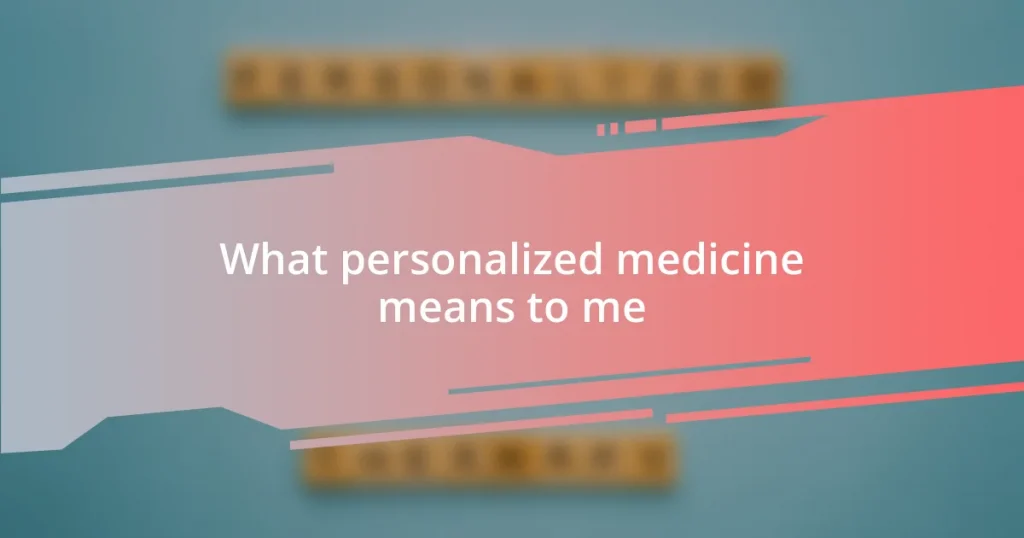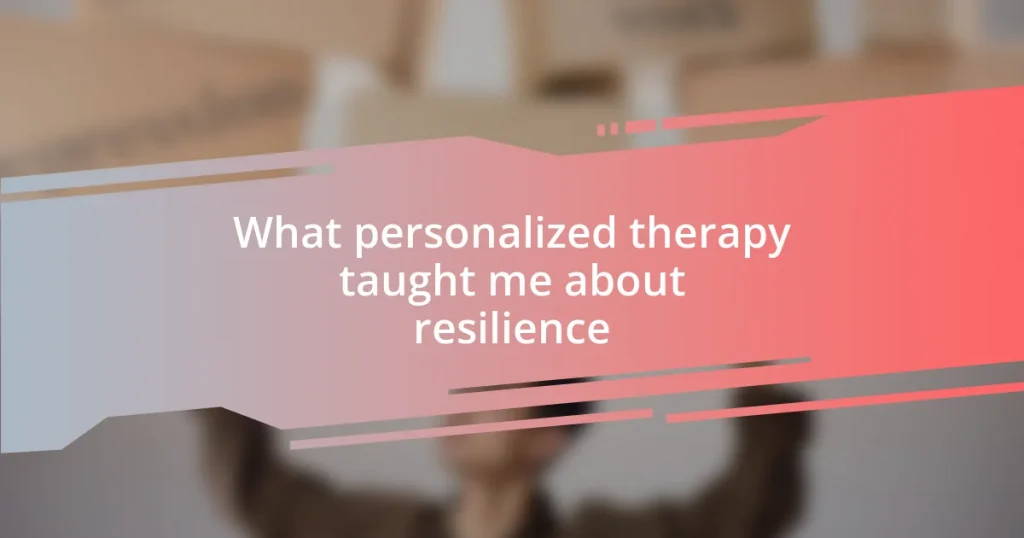Key takeaways:
- Genetic data sharing emphasizes the need for balancing scientific innovation with ethical responsibility, ensuring participant privacy and trust.
- Implementing best practices for data anonymization is essential to protect identities and maintain community trust while facilitating research collaboration.
- The ethical implications of sharing genetic data require continuous reflection on consent, potential misuse, and the importance of transparent partnerships, especially with marginalized communities.
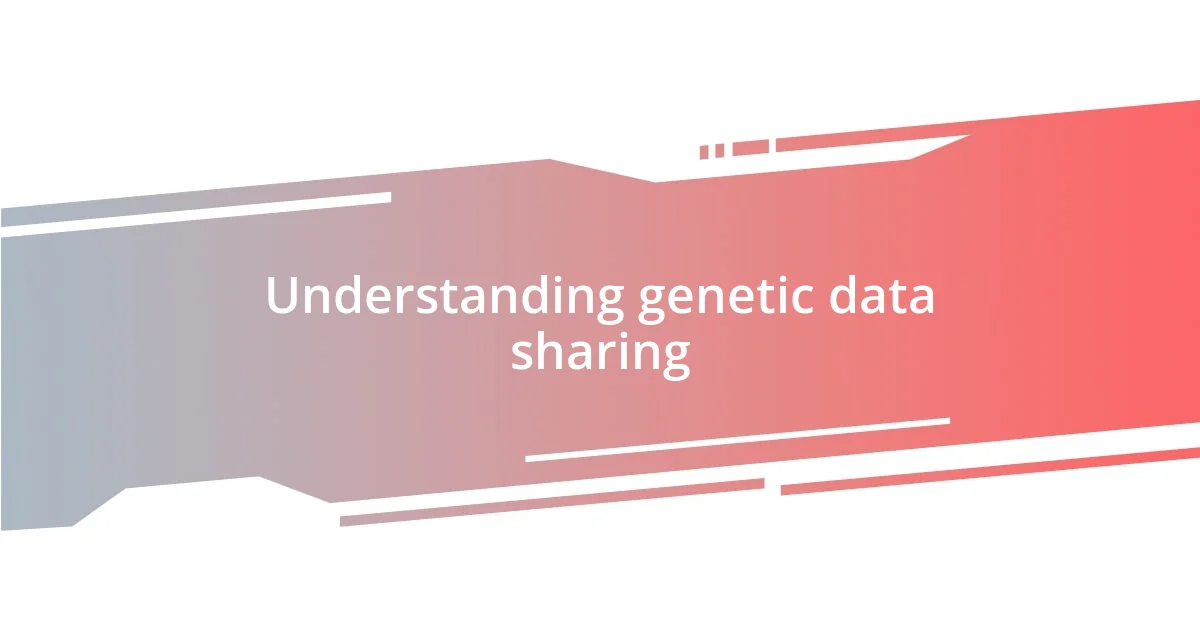
Understanding genetic data sharing
Genetic data sharing can feel like standing at a crossroads; the excitement of discovery is tempered by questions of privacy and ethics. I remember when I first encountered genetic data sharing in a research setting; it was fascinating to realize how information from one individual could hold keys to understanding diseases affecting many. This collaboration among researchers can accelerate breakthroughs, but it makes you wonder: how do we ensure that everyone’s genetic privacy is respected?
As I navigated these waters, I felt the weight of responsibility on my shoulders. Sharing genetic data isn’t just about opening up a database; it’s about building a community of trust among participants who have bravely chosen to share their personal information. I often ask myself, what safeguards can be put in place to honor their contributions and protect their identities while still advancing scientific knowledge?
To me, understanding genetic data sharing means acknowledging both its potential and its pitfalls. Engaging in this dialogue pushes us to consider tough questions, like how we can balance innovation with ethical stewardship. Have you felt that tension between the promise of genetic research and the fears of exploitation? It’s a nuanced conversation, but one that is essential for the future of genetic studies.
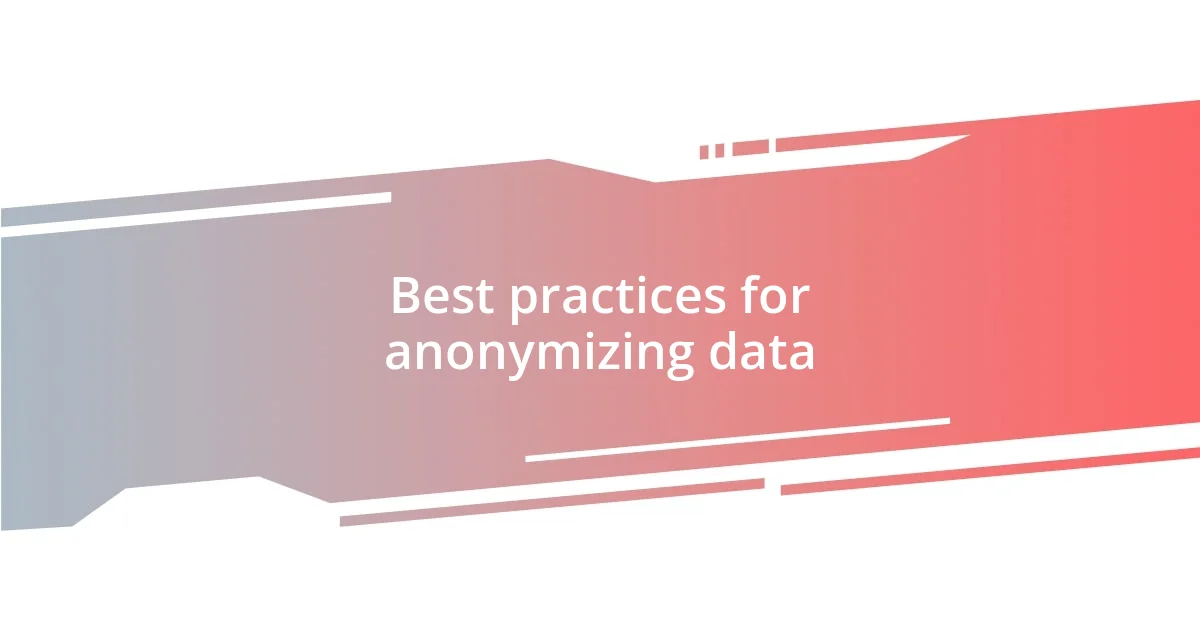
Best practices for anonymizing data
Anonymizing data isn’t just a technical requirement; it’s a moral obligation. I’ve witnessed firsthand how researchers’ commitment to safeguarding participant identities can transform a community’s trust and willingness to engage in future studies. When I led a project that involved sensitive genetic data, rigorous anonymization protocols made all the difference. It felt empowering, knowing we were respecting individuals while striving for scientific advancement.
Here are some best practices for anonymizing genetic data:
- Remove or Mask Identifiers: Ensure names, addresses, and other direct identifiers are stripped away or altered.
- Use Data Aggregation: Combine data from multiple sources so individual contributions are less discernible.
- Implement Noise Addition: Introduce slight variations to the data that cannot be traced back to any individual, making it harder to identify anyone.
- Limit Data Access: Restrict access to only those who absolutely need the data for research purposes.
- Regularly Audit Procedures: Continuously check and improve anonymization methods to keep up with new threats and technologies.
I remember feeling the nervous energy in the room when we presented our strategy for a data-sharing initiative. Everyone was anxious but hopeful, and it was clear that our approach to anonymization was key to winning over skeptics. It was a powerful reminder that how we handle data can have lasting impacts—not only on research outcomes but on public perception of genetic studies as a whole.
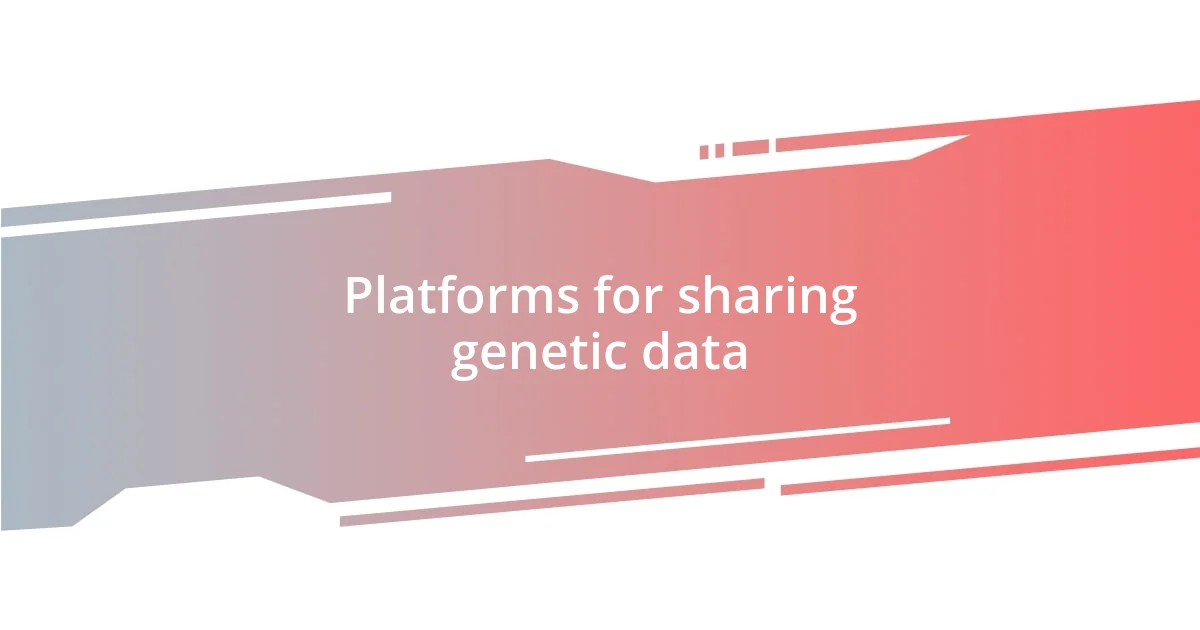
Platforms for sharing genetic data
When it comes to sharing genetic data, choosing the right platform is essential. There are various platforms available, each designed with unique features tailored to specific needs. For example, I’ve explored platforms like GenBank and the European Genome-phenome Archive (EGA), which both facilitate data sharing but approach it differently. GenBank is more focused on sequence data from a broad range of organisms, while EGA emphasizes human genetic data, providing more robust protections for privacy. These nuanced differences make it crucial to evaluate which platform aligns with your specific goals while considering the ethical implications.
Another angle to consider is collaboration. I recall collaborating with researchers from different fields using platforms such as dbGaP. The experience was enriching; dbGaP facilitated not only data sharing but also a vibrant community of researchers working together. It made me realize that the best platforms aren’t just about storage or exchange—they also foster collaboration that drives innovation and understanding. Are these features something you would look for when choosing a platform?
Lastly, I can’t stress enough how important transparency is in these platforms. I’ve seen firsthand how open-source platforms like OpenSNP empower participants to share their data and insights voluntarily. This level of openness builds trust and encourages more individuals to contribute. Personally, it felt exhilarating to witness participants become active players in their genetic narratives rather than passive subjects of research. It’s a hopeful reminder that by sharing genetic data thoughtfully, we can enhance our collective understanding of genetics.
| Platform | Focus Area |
|---|---|
| GenBank | Broad-ranging sequence data |
| EGA | Human genetic data with strong privacy protections |
| dbGaP | Human phenotype and genotype data, supports collaboration |
| OpenSNP | Open-source platform for voluntary data sharing |
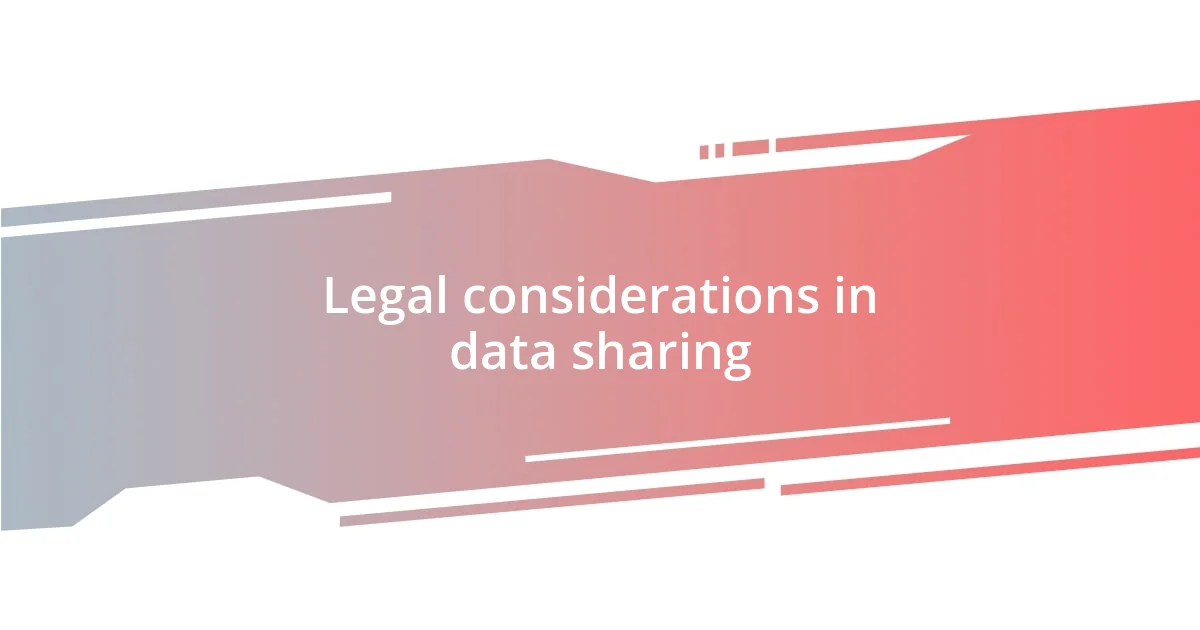
Legal considerations in data sharing
Navigating the legal landscape of data sharing requires a keen understanding of regulations like the Health Insurance Portability and Accountability Act (HIPAA) and the General Data Protection Regulation (GDPR). These laws establish the groundwork for protecting individual privacy while allowing for scientific collaboration. I remember poring over these regulations during a project assessment; it felt both daunting and vital, realizing that our compliance wasn’t just a checkbox—it was a commitment to ethical research.
Consent forms are another key legal aspect I often reflect on. Clear and transparent consent can empower participants, but it must be crafted meticulously to avoid ambiguity. In one project, we revised our consent process after realizing some participants didn’t fully understand what they were agreeing to. It highlighted how vital it is to ensure that people feel informed and respected; after all, genuine consent isn’t just a formality—it’s the foundation of trust in our research practices.
Moreover, I’m constantly reminded that sharing data is not merely a legal exercise; it is an ethical responsibility. When I worked with community organizations, the importance of creating a data-sharing agreement was evident. We had to define boundaries around how data could be used and ensure that participants felt their rights were protected. It prompts me to ask: How often do we revisit these agreements and ensure they’re aligned with the evolving legal landscape and community values? It’s a powerful question that reminds us to remain vigilant and responsive.
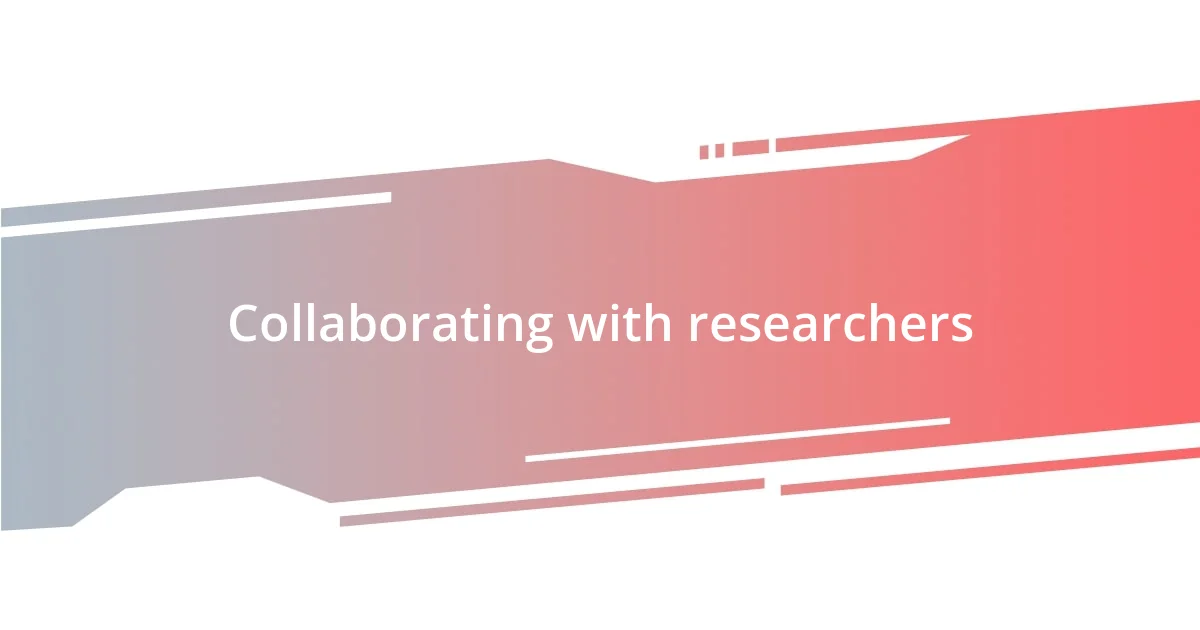
Collaborating with researchers
Collaborating with researchers has always been one of the most rewarding aspects of working with genetic data. I vividly remember a project where I teamed up with a group from a different university. We accessed dbGaP to combine our data sets, and the synergy was incredible—it sparked new ideas and drove our research in directions I hadn’t anticipated. Have you ever experienced that moment when collaboration opens doors you didn’t even know existed? It’s a reminder of how sharing our genetic data can catalyze breakthroughs that single researchers might struggle to achieve alone.
I also find that collaborative projects often lead to unexpected friendships. As we delved into the intricacies of our findings, we bonded over late-night discussions and shared insights on our specific expertise. During one of those discussions, we stumbled upon a correlation that had eluded both of our teams separately. This experience showed me that when researchers come together, the outcome can be more than just findings—it can be a rich tapestry of knowledge and camaraderie. How often do we overlook the human connections that emerge from data sharing?
Additionally, collaboration is not without its challenges. There was a moment when we faced disagreements about data interpretation. It struck me how crucial open communication was in those situations. I learned that being open to different perspectives not only enriches the analysis but also builds a stronger, united front. Every researcher has unique insights, and those differences can lead to innovative solutions if approached with respect and curiosity. Have you considered how your collaborations might evolve when each voice is valued equally? It’s something to reflect on as we navigate this complex landscape together.
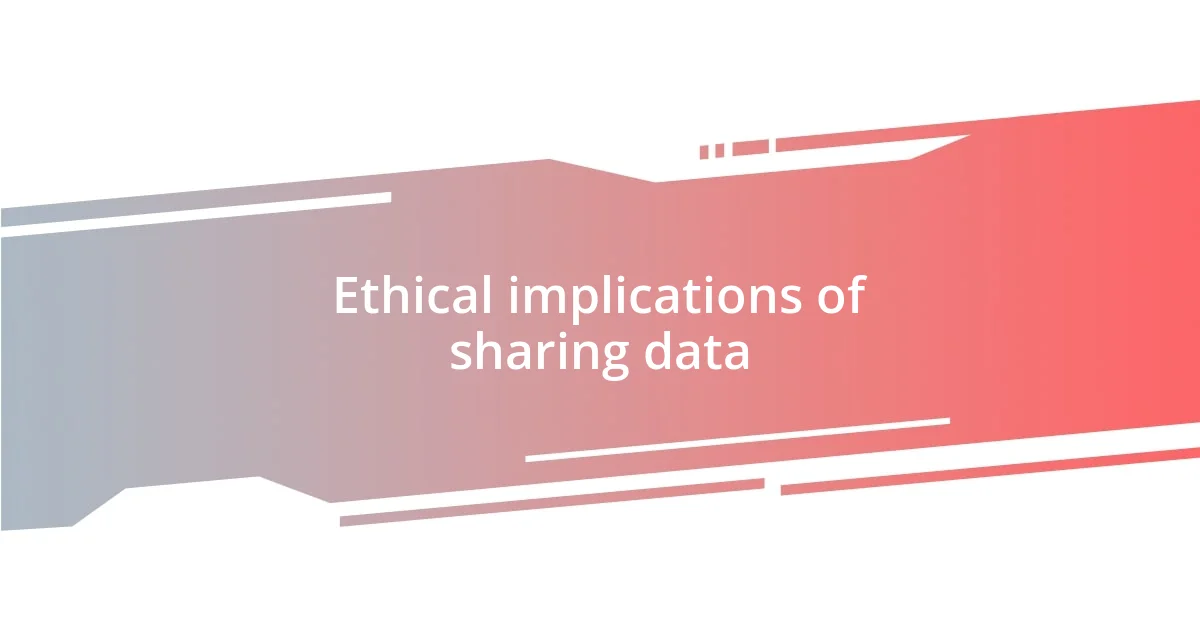
Ethical implications of sharing data
Ethical implications are at the heart of genetic data sharing, influencing every decision we make as researchers. One vivid memory that stands out to me is when I participated in a panel discussion about data ethics. We delved deep into the balance between advancing science and respecting participant autonomy, prompting me to ask myself: How do we ensure that our thirst for knowledge doesn’t overshadow the rights of individuals? I realized that establishing a culture of ethical awareness isn’t just a responsibility—it’s a necessity.
In my experience, considering the potential misuse of shared data is crucial. I recall working on a project where we had to think critically about who might access our data and for what purpose. It was unsettling to face the reality that our noble intentions could lead to unanticipated consequences. This experience taught me to always ask: Are we prepared for the implications of our data’s journey beyond the initial context? It’s an uncomfortable but essential question that every researcher should consider.
Moreover, the ethical dimension shifts when we include marginalized communities in research. During a community-engaged project, I witnessed firsthand how transparency and mutual respect built bridges of trust. I remember the emotion in the room when we openly discussed how data would be used and the benefits it could bring. This experience reinforced my belief that ethical sharing goes beyond guidelines; it’s about fostering relationships that honor the humanity behind the data. Isn’t it time we prioritize these ethical considerations as central to our research endeavors?

